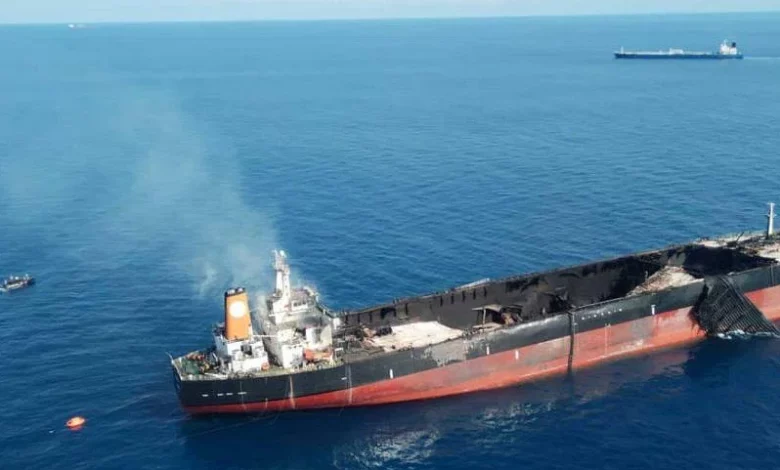Shadow fleet shines light on fast-growing Gabon ship registry

In terms of percentage growth, the flag of Gabon is now the fastest-growing in the world this year, taking on an ever larger slice of the so-called shadow fleet hauling sanctioned Russian, Iranian and Venezuelan oil.
The flag, whose administrator has offices in the UAE, Mumbai, Piraeus and Hong Kong, has doubled in size this year, according to a recently published white paper from S&P Global Market Intelligence.
The majority of the new additions having transferred from the under pressure St Kitts and Nevis registry, with Mumbai-based Gatik Ship Management one of the leading clients.
S&P Global data shows that 98% of Gabon-flagged tankers above 10,000 dwt fall under Russian trade and shipping sanctions as high-risk vessels or have no identifiable ultimate group owner.
Among the ships on its books is the Pablo, a 1997-built aframax that exploded in Malaysian waters killing three crewmembers at the start of this month. The destroyed, uninsured ship, with a history of hauling Iranian oil, remains at anchor as Malaysian authorities consider what to do with it.
Last September, the crew of the bitumen tanker Parth, also flagged with the West African nation, were forced to abandon ship off India after the ship took on water and listed.
Data analytics firm Vortexa assessed, as of two weeks ago, that exactly 1,000 unique tankers have operated in what it terms as the opaque market since January 2021, of which 745 of them were still active in the first quarter this year.
Over at brokers BRS, meanwhile, the latest analysis shows the grey fleet is still expanding, but at a slower pace than earlier this year.
The latest update from BRS shows there are 758 tankers in the so-called grey fleet, up from 731 a month ago.
“This suggests that the grey fleet growth rate is slowing down,” commented Andrew Wilson, BRS’s head of research, a point of view shared by many S&P brokers who have noticed a slowdown in vintage tanker sales recently.
The shadow fleet has more than tripled in size since the start of the war between Russia and Ukraine, with TankerTrackers.com suggesting recently that one in five VLCCs are “up to no good”.
TankerTrackers.com, one of the world’s leading authorities on the illicit seaborne movement of oil, has its own visually-proven numbers on the dark fleet, which as of two weeks ago tallied 544 ships.
Major class societies, managers, and insurers have shunned former clients in Moscow, Tehran and Caracas, with substandard tonnage subsequently running into trouble at many destinations around the world, exacerbated by increased use of ship-to-ship transfer operations, all of which is proving a tremendous strain on the world’s shipping insurers.
“The simple fact is that a growing number of vessels that are transporting oil are insured, flagged, and classed with institutions and countries that do not provide anything like the same technical and regulatory oversight as we have come to expect whilst those providing the insurance cover lack the experience and quite possibly the financial capacity to deal with a major incident,” commented Mike Salthouse, a sanctions expert and head of external affairs at NorthStandard, in conversation with Splash earlier this month.
